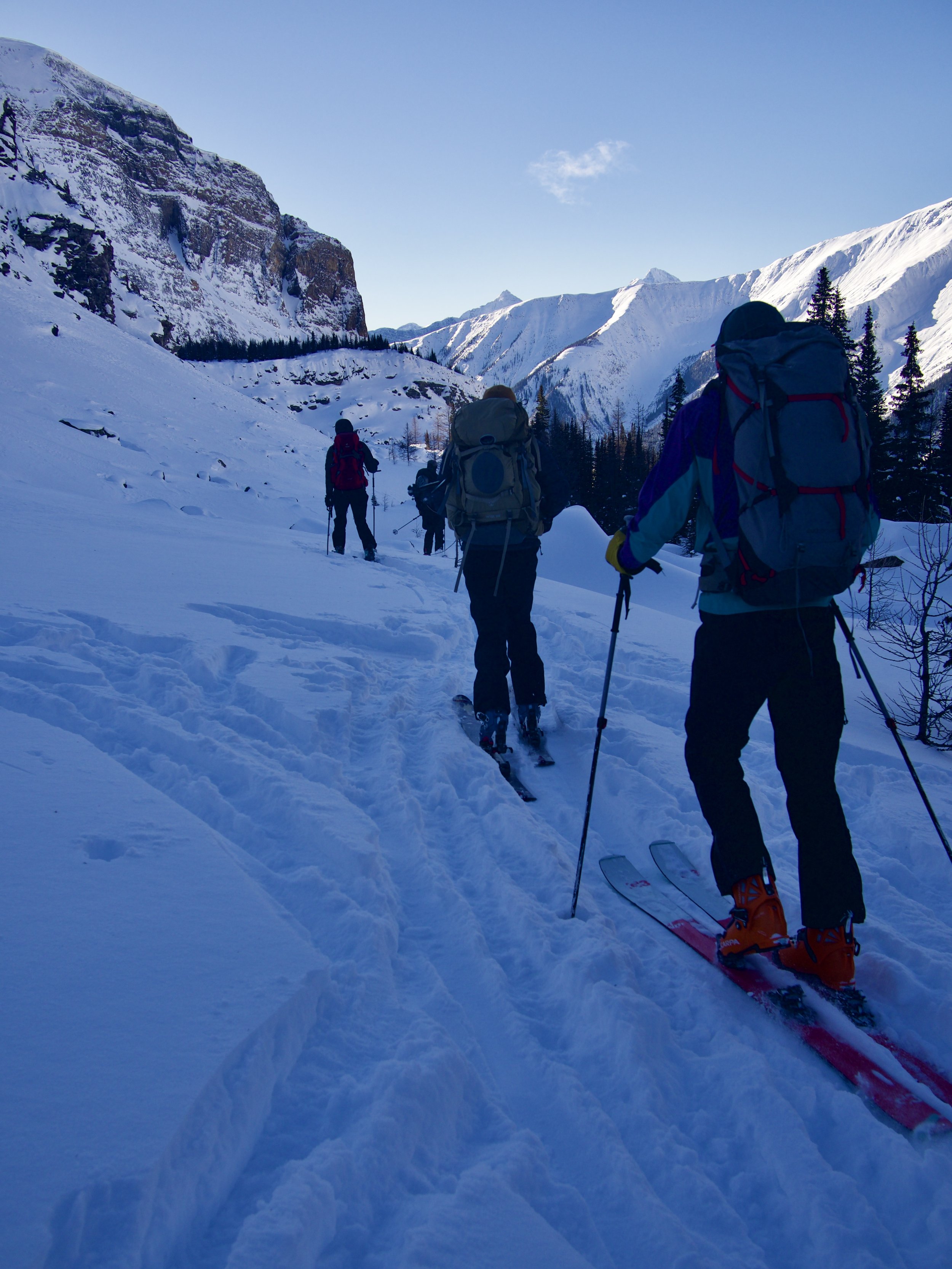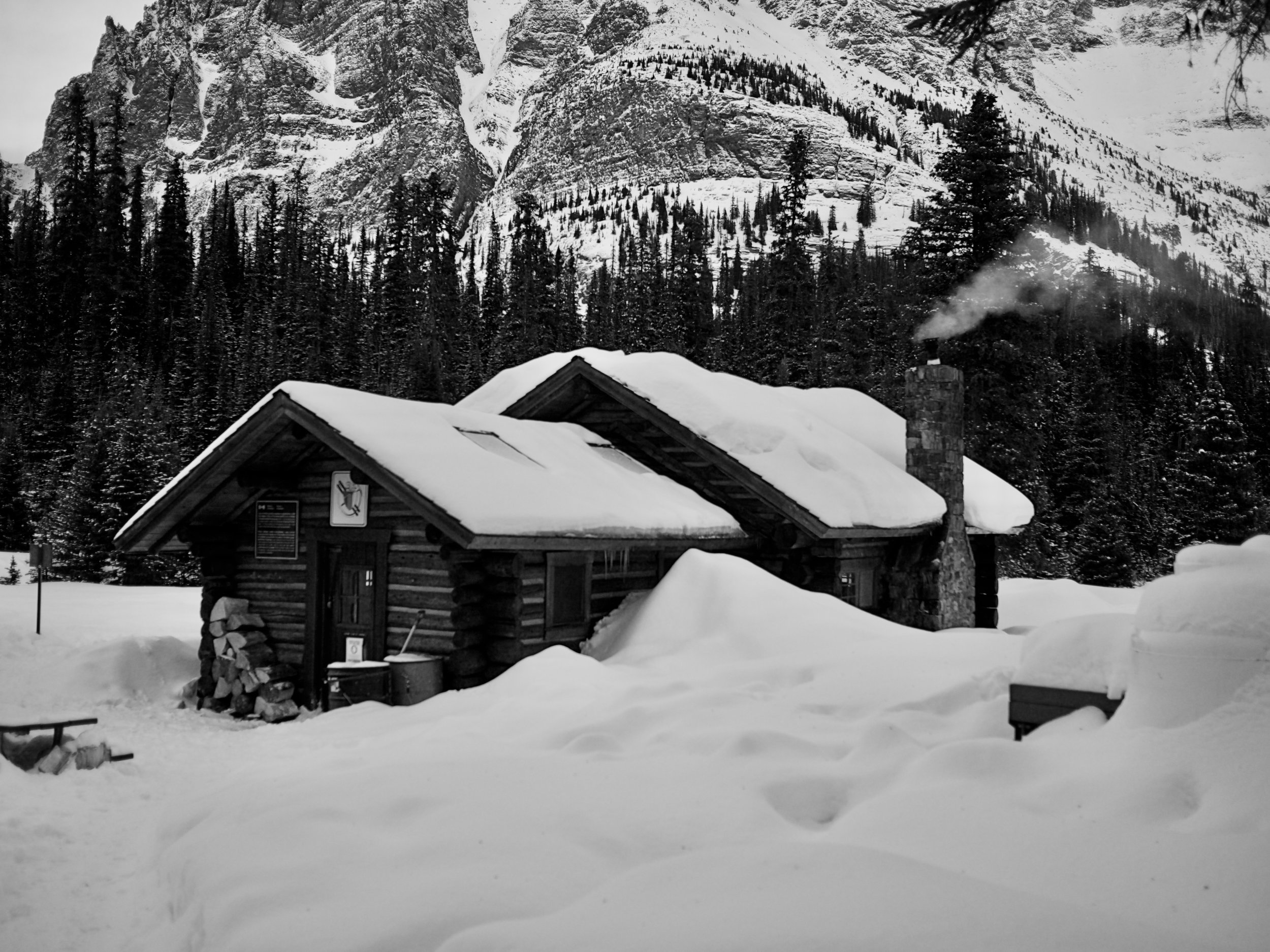A weekend at Elizabeth Parker Hut
Elizabeth Parker hut is nestled in a gorgeous alpine meadow in Yoho National Park, approximately 500m from the famous Lake O’Hara. There are two huts, the smaller and original Wiwaxy cabin built in 1912 and the larger Elizabeth Parker Hut built in 1919. Myself, family, and friends were lucky to have both cabins entirely to ourselves which made for a truly exceptional weekend of catching up, taking in the beautiful scenery, and spending some time thinking about Elizabeth Parker and her legacy (for me at least!).
Who was Elizabeth Parker?
The Canadian Pacific Railway (CPR) completed their transnational line in 1885 and promptly spearheaded development in Banff, building the Banff Springs Hotel, in Lake Louise, with the Chateau Lake Louise, and in the Selkirk mountains with Glacier House, opening up Canada’s west for the first time. The combination of the accessibility that the CPR provided, the luxury hotels built, and heavy marketing of ‘50 Switzerland’s in one’ made the Canadian Rocky Mountains widely accessible to an international audience for the first time in history. This led to many European climbers visiting Canada’s vast mountain ranges and inspired Canadians to start climbing as well.
As mountaineering in Canada started to attract the attention of Canadians, it also began to foster, or more accurately re-ignite, a sense of nationalism within the mountain community and propelled the development of the Alpine Club of Canada (ACC). In the early 1900’s, Charles Fay, president of the Appalachian Mountain Club and founder of the American Alpine Club, suggested to Arthur Wheeler, a prominent surveyor of Canada’s mountains, that they should establish a North American Alpine Club. While intrigued Wheeler had great ambition for a stand alone Canadian club. However, he couldn’t garner enough momentum to turn this dream into a reality - that is until he met Elizabeth Parker. Described as a ‘staunch nationalist’, Parker and her writing was critical to creating the interest and momentum needed to establish the ACC. At the time, she was journalist for the Manitoba Free Press and frequently used her platform to take issue with Canada's lack of self-esteem and ignite a sense of pride throughout the nation again, referencing the ongoing ‘conquest’ of foreigners claiming first ascents throughout Canada’s west. For example, she wrote:
“How many first ascents have been made by Canadians? It is simply amazing that we leave the hardships and the triumphs of first ascents to foreigners... Canada has not even an Alpine organisation… Is the mountaineering prestige gained by climbing our high mountains to be held by Americans and Englishmen?”
Parker’s work emulated that of the CPR; throughout her writing she ideologically linked the CPR’s mission/vision of an emerging nationhood with the purposes and goals of the ACC. In doing this, Parker and Wheeler successfully gained enough momentum to host a meeting in Winnipeg in 1906 with significant members of Canada’s mountaineering community. This meeting ultimately resulted in the creation of the Alpine Club of Canada and contributed, one year later in 1907, to the establishment of the Canadian Alpine Journal (CAJ). The ACC and its literary publication proceeded to play a major role in shaping Canada’s mountaineering history. Today, thanks to the work of Elizabeth Parker, Arthur Wheeler, and many more we are lucky to have an exceptional backcountry hut system throughout Canada’s mountain ranges.










Though some might argue this - I didn’t spend the entire weekend giving historical lectures to my friends about the legacy of those mountain pioneers who came before us. We also did some skiing!
We skied in on Friday, under blue skies and balmy temperatures - something that dramatically changed come Saturday! After a night of catching up with old friends and making new friends we were again greeted by a spectacular clear sky but very cold temperatures. It continued to plummet to -34 by Sunday. While we had a few toe causalities, everyone managed to stay relatively frost free.
Due to snowpack instability, we didn’t do too much skiing but got out for a gorgeous walk up to around McArthur Lake and found a few half-decent treed slopes to ski on our way back to the hut. Felt like a luxury after the relatively poor snow season we have had in the Rockies!
On our way on Sunday - a very chilly, but very beautiful day.

